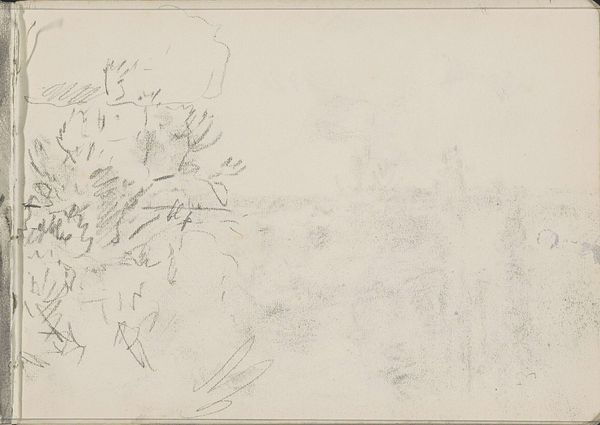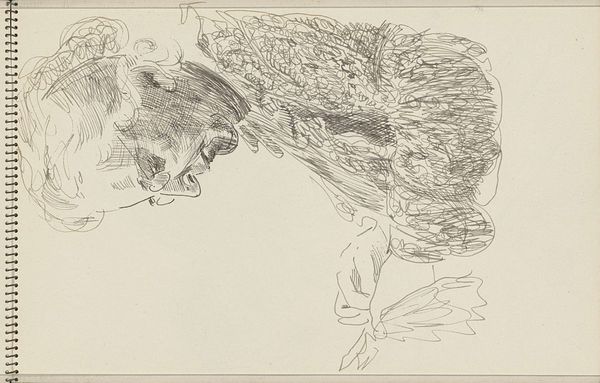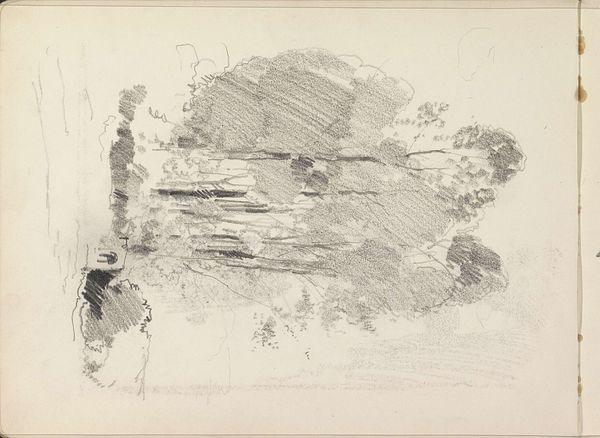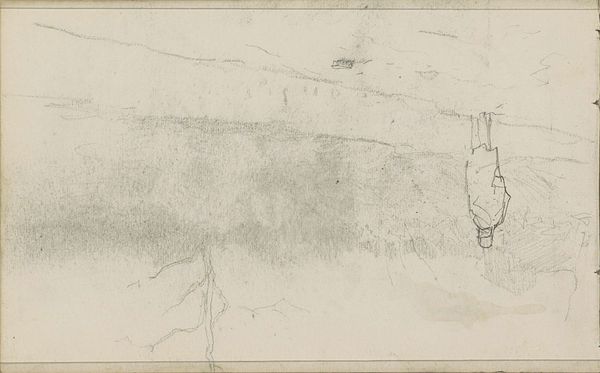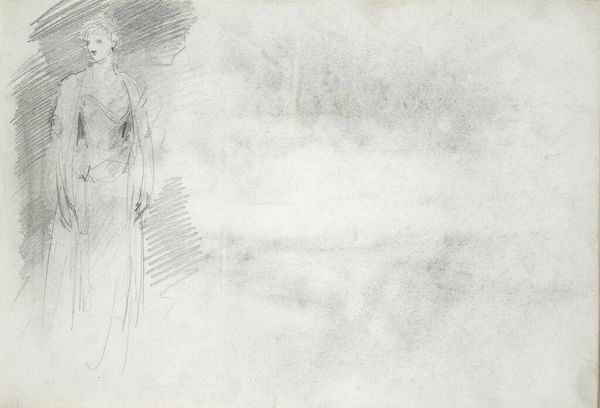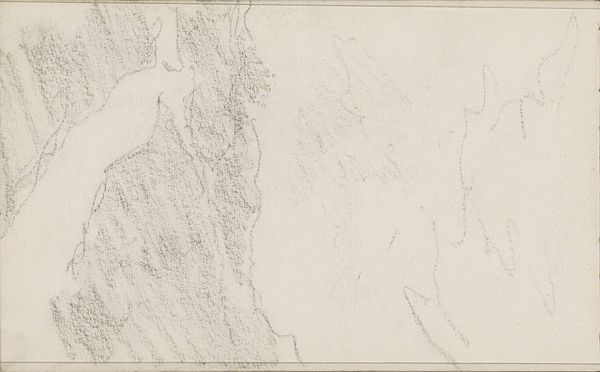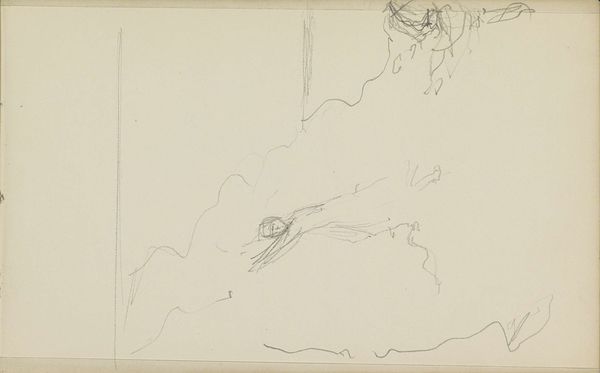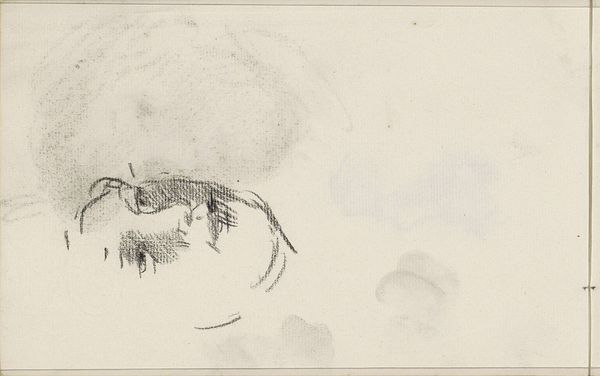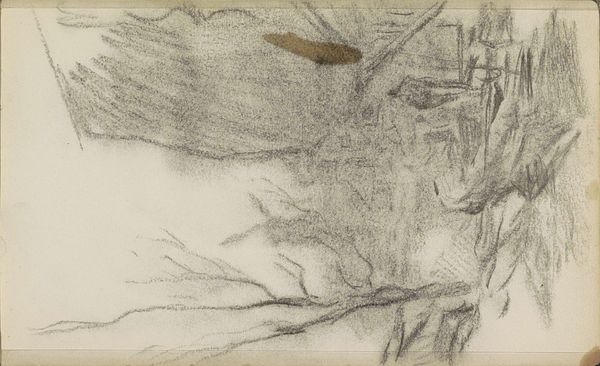
Copyright: Rijks Museum: Open Domain
Johan Antonie de Jonge created this charcoal drawing, titled 'Figure in a Dune Landscape'. Here, the human figure, dwarfed by the immensity of the landscape, stands as a symbol deeply embedded in the history of art and human consciousness. Consider the Rückenfigur, a figure seen from behind, a motif that appears across centuries. From Caspar David Friedrich's romantic wanderers to modern depictions of solitude, this figure invites us to project our own emotions and experiences onto the scene. The individual becomes a mirror, reflecting our own contemplation of nature and existence. The dunes themselves, with their shifting sands, may symbolize the transient nature of life. This motif has roots in ancient allegories of the passage of time. Each grain of sand represents a moment slipping away. This image touches upon our primal awareness of our place in the cosmos, echoing the eternal dance between humanity and nature. Such symbols recur, evolve, and resonate anew with each passing age.
Comments
No comments
Be the first to comment and join the conversation on the ultimate creative platform.

